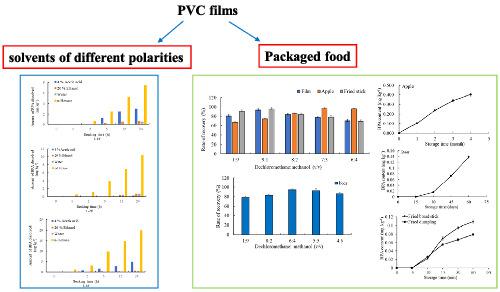当前位置:
X-MOL 学术
›
Packag. Technol. Sci.
›
论文详情
Our official English website, www.x-mol.net, welcomes your
feedback! (Note: you will need to create a separate account there.)
Migration of bisphenol A from polyvinyl chloride plastics to solvents of different polarities and packaged food in China
Packaging Technology and Science ( IF 2.8 ) Pub Date : 2020-11-02 , DOI: 10.1002/pts.2545 Hen Wang 1 , Lijia Jiang 1 , Shuang Gu 1 , Xiangyang Wang 1
Packaging Technology and Science ( IF 2.8 ) Pub Date : 2020-11-02 , DOI: 10.1002/pts.2545 Hen Wang 1 , Lijia Jiang 1 , Shuang Gu 1 , Xiangyang Wang 1
Affiliation

|
Bisphenol A (BPA) used as an additive in polyvinyl chloride (PVC) products is an endocrine disrupter that causes negative effects on human health. The aim of the present study is to investigate the BPA contents in 26 different plastics bought from China, their major components were identified by Fourier transform infrared (FT‐IR) spectrometry, and the migration of BPA from these materials into four representative solvents and four foods were determined by high‐performance liquid chromatography (HPLC). Results showed that nine kinds of plastics were identified as PVC, and eight plastic samples were PVC‐based films. Recoveries of BPA in films and foods were 88.87%–97.29%, and their precisions expressed as relative standard deviation (RSD) were 1.17%–4.72%. The limit of detection (LOD) was 0.01–0.02 μg ml−1. In the tests of migration into water, 20% ethanol, 4% acetic acid, and n‐hexane, migrations from given films, were in all cases greatest into n‐hexane (7.44–20 mg kg−1 after 24 h). Migrations from the films with nonzero BPA contents to four foods ranged from 0.079 to 0.403 mg kg−1, which were higher than the updated European Union specific migration limit for BPA (0.05 mg kg−1). Therefore, PVC should be taken into account in estimating BPA intake or exposure to this substance.
更新日期:2021-01-07











































 京公网安备 11010802027423号
京公网安备 11010802027423号